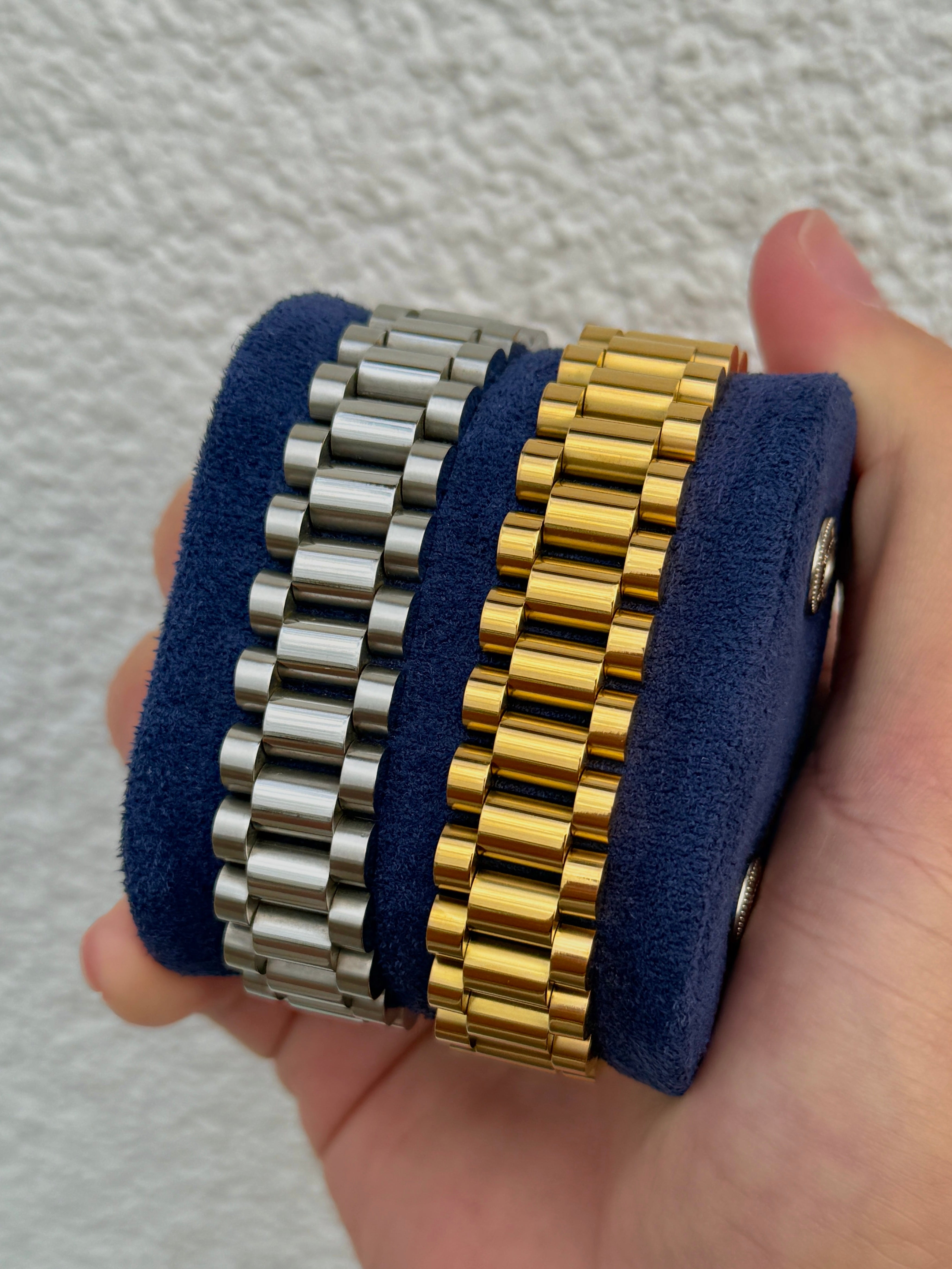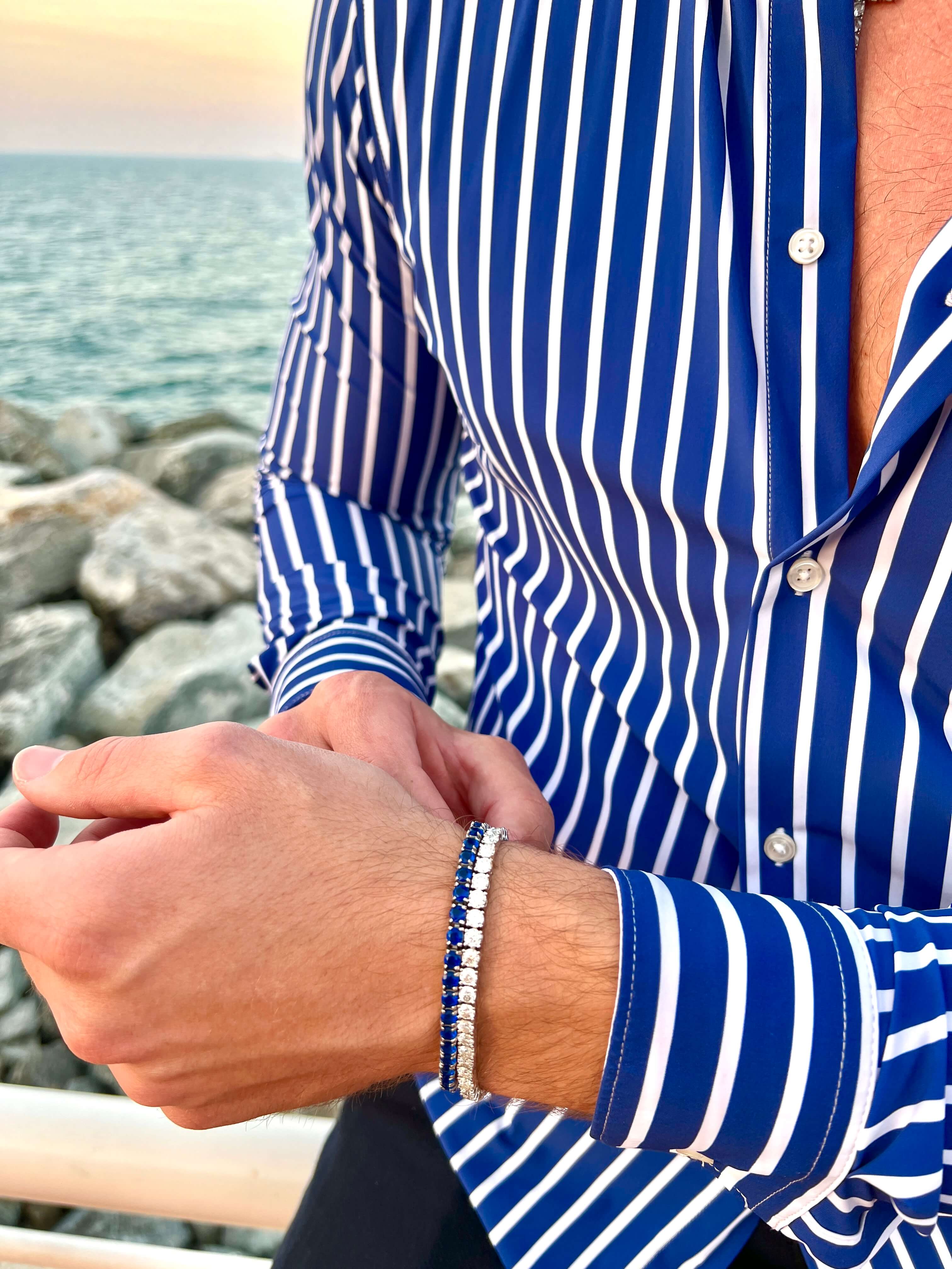
What jewelry material is the best? Stainless steel, sterlng silver or Gold?
When selecting jewelry, the choice of material of stainless steel, sterling silver, or gold significantly impacts the piece's durability, appearance, maintenance, and cost. Understanding the characteristics of each can help you make an informed decision that aligns with your style preferences and lifestyle needs.
Stainless Steel: Modern Durability
Composition and Properties: Stainless steel is an alloy primarily composed of iron, chromium, and nickel. The inclusion of chromium provides a protective layer against corrosion and tarnishing, making it highly durable and resistant to rust. Its robustness makes it ideal for everyday wear, especially for individuals with active lifestyles
Pros:
-
Durability: Highly resistant to scratches, corrosion, and tarnishing.
-
Low Maintenance: Retains its shine with minimal care
-
Hypoallergenic Options: Grades like 316L are suitable for sensitive skin
-
Affordability: Generally more budget-friendly compared to precious metals
Cons:
-
Aesthetic Limitation: Lacks the prestige and traditional appeal of precious metals.
-
Resizing Challenges: Difficult to resize due to its strength.
Product Recommendations:
-
President Bracelet Steel: A sleek and modern design suitable for daily wear.
-
Titan Bangle Steel: Combines contemporary aesthetics with durability.
Sterling Silver: Classic Elegance
Composition and Properties: Sterling silver consists of 92.5% pure silver and 7.5% other metals, typically copper, to enhance its strength. This alloy offers a bright finish but is softer than stainless steel.
Pros:
-
Aesthetic Appeal: Offers a classic and timeless look
-
Versatility: Complements various skin tones and styles
-
Resizing Ease: Easier to resize and repair compared to harder metals
Cons:
-
Prone to Tarnishing: Requires regular polishing to maintain its shine.
-
Softer Metal: More susceptible to scratches and deformation
-
Potential Allergies: May contain nickel, which can cause allergic reactions in some individuals.
Gold: Luxurious Prestige
Composition and Properties: Gold jewelry is available in various karats, indicating purity level from 24k being pure gold, while 18k and 14k are mixed with other metals like copper or silver for added strength. Gold's inherent luster and rarity contribute to its high value and desirability.
Pros:
-
Prestige and Value: Symbolizes luxury and status; retains value over time.
-
Hypoallergenic: Higher karat gold is less likely to cause allergic reactions.
-
Low Maintenance: Resistant to tarnish and corrosion.
Cons:
-
Softness: Higher purity gold is softer and more prone to scratches.
-
Cost: Significantly more expensive than stainless steel or sterling silver.
Making the Right Choice
When deciding between stainless steel, sterling silver, and gold for your jewelry, consider the following factors:
-
Durability Needs: For everyday wear and active lifestyles, stainless steel offers unmatched resilience.
-
Aesthetic Preferences: If you prefer classic and timeless pieces, sterling silver provides elegance but requires more maintenance
-
Budget Considerations: Gold, while luxurious, comes at a higher price point; stainless steel offers affordability without compromising on style.
-
Skin Sensitivity: Opt for hypoallergenic materials like certain grades of stainless steel or higher karat gold if you have sensitive skin


